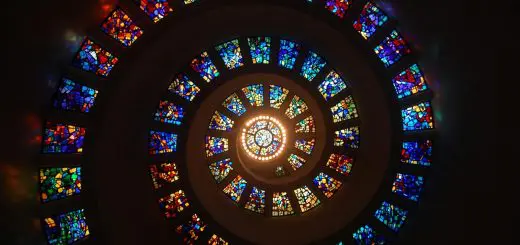The Legend of Tengu-no-Sojobo: King of the Tengu

Looking for more amazing products? Check out our online store and explore our collection here! Happy shopping!
Before diving in, please note: This post is for informational purposes only. If you’d like to know more about how we approach topics, feel free to check out our friendly Disclaimer Page.
Hey there, amazing readers! 
We’re committed to delivering quality posts, and your support (even just sticking around despite the ads) means everything to us. So, bear with us, and thanks for helping us keep the good vibes rolling. Now, on to the fun stuff!
TRANSLATE BUTTON AT THE END OF THE ARTICLE
Overview
Japanese folklore is rich with captivating tales of mythical creatures, and one of the most intriguing figures is Tengu-no-Sojobo, the King of the Tengu.
Tengu are supernatural beings often depicted as bird-like creatures with humanoid features.
Tengu-no-Sojobo, also known as Daitengu, is said to be the supreme leader of all Tengu and holds immense power and wisdom.
This article will delve into the origins of Tengu in Japanese mythology, explore the attributes and appearance of Tengu-no-Sojobo, examine their role in folklore and religion, and shed light on their powers and influence on human affairs.
We will also explore famous encounters with Tengu-no-Sojobo, their depiction in literature and art, and the symbolic significance they hold in Japanese culture.
Finally, we will ponder the question of whether Tengu-no-Sojobo is fact or fiction.
Origins of the Tengu: Japanese Mythology
To understand the legend of Tengu-no-Sojobo, we must first explore the origins of Tengu in Japanese mythology.
Tengu are believed to have originated from a combination of indigenous beliefs and influences from Chinese folklore.
They are often associated with the mountainous regions of Japan, and their roots can be traced back to Shinto and Buddhist traditions.
According to mythology, Tengu were once human but underwent a transformation due to their intense obsession with the pursuit of knowledge and spiritual enlightenment.
They became solitary beings dwelling in the mountains, acquiring supernatural abilities and knowledge over time.
Tengu were revered as mountain deities and guardians of nature, often associated with divine forces and the spiritual realm.
Tengu-no-Sojobo: The Supreme Leader of the Tengu
Tengu-no-Sojobo, also known as Daitengu, is considered the most powerful and revered among all Tengu.
Sojobo is believed to reside on Mount Kurama near Kyoto, which is considered a sacred place associated with spiritual practices and enlightenment.
According to legend, Sojobo is the leader of a group of Tengu known as the Kurama Tengu, who are said to possess extraordinary wisdom and supernatural abilities.
Sojobo is depicted as a wise and noble being, often portrayed with an old man’s face and a long white beard.
He is known for his immense knowledge, martial arts skills, and his ability to control the wind and air.
Sojobo is highly respected and revered by the Tengu community and is considered a master of martial arts and a symbol of spiritual enlightenment.
Tengu-no-Sojobo’s Appearance and Attributes
Tengu-no-Sojobo’s appearance is distinct and easily recognizable.
He is often depicted as a tall, bird-like creature with wings and a long beak.
Sojobo’s wings are usually depicted as large and powerful, symbolizing his ability to fly through the air effortlessly.
He is often depicted wearing traditional Japanese robes and carrying a feathered fan, which is believed to possess magical powers.
Sojobo’s attributes extend beyond his physical appearance.
He is known for his immense wisdom and knowledge, acquired through years of spiritual practice and enlightenment.
Sojobo possesses great insight into human affairs and is said to have the ability to foretell the future.
He is also known for his martial arts prowess, particularly in the use of the sword.
Tengu’s Role in Japanese Folklore and Religion
Tengu, including Tengu-no-Sojobo, play a significant role in Japanese folklore and religion.
They are often regarded as intermediaries between humans and the divine, possessing the ability to communicate with both realms.
Tengu are believed to protect the mountains, forests, and nature in general, and they are seen as the guardians of ancient Buddhist and Shinto temples.
In Japanese folklore, Tengu are often portrayed as mischievous creatures with the ability to possess and control human beings.
They are known to test and trick those who venture into the mountains, challenging their spiritual and moral integrity.
However, they can also be benevolent and offer guidance to those who show respect and humility.
Tengu are deeply ingrained in various religious practices in Japan.
They are often venerated as deities and worshipped in shrines dedicated to their honor.
Many festivals and rituals involve the appeasement of Tengu, seeking their blessings and protection.
Tengu-no-Sojobo’s Powers and Abilities
Tengu-no-Sojobo possesses a wide range of powers and abilities, making him one of the most formidable supernatural beings in Japanese mythology.
He is said to have control over the wind and can manipulate it at will.
Sojobo’s ability to fly effortlessly through the air is attributed to his mastery of wind manipulation.
Sojobo is also renowned for his martial arts skills, particularly in swordsmanship.
He is believed to be an expert swordsman, capable of defeating even the most skilled warriors.
His combat abilities are combined with his wisdom and strategic thinking, making him an unbeatable adversary.
Another notable power of Tengu-no-Sojobo is his ability to shape-shift.
He can take on various forms, including that of a human or even an animal, allowing him to blend in with his surroundings and observe human affairs without being detected.
Tengu-no-Sojobo’s Influence on Human Affairs
Tengu-no-Sojobo’s influence on human affairs is profound and far-reaching.
He is believed to have the power to influence the thoughts and actions of individuals, often testing their character and resolve.
Sojobo’s encounters with humans are usually portrayed as transformative experiences, leading individuals on a path of self-discovery and spiritual growth.
Sojobo’s influence extends beyond individual encounters.
He is said to play a role in shaping the destiny of nations and guiding historical events.
Legends tell of Sojobo’s involvement in the rise and fall of emperors and the protection of ancient temples and sacred sites.
Famous Encounters with Tengu-no-Sojobo
Throughout Japanese history, there have been numerous accounts of famous encounters with Tengu-no-Sojobo.
One notable tale involves the legendary samurai Minamoto no Yoshitsune, who is said to have trained under Sojobo on Mount Kurama.
According to the legend, Sojobo taught Yoshitsune martial arts and strategy, leading to his eventual success as a renowned warrior.
Another famous encounter involves the scholar and poet Sugawara no Michizane, who sought the guidance of Sojobo when he was unjustly exiled.
Sojobo appeared to him in a dream and provided him with the inspiration and wisdom to compose beautiful poetry, which eventually led to Michizane’s redemption.
Tengu-no-Sojobo in Literature and Art
Tengu-no-Sojobo’s captivating presence has inspired numerous works of literature and art throughout Japanese history.
In traditional Noh theater, Sojobo is often portrayed as a wise and noble figure, guiding the protagonists and imparting his wisdom.
He is also a popular subject in ukiyo-e woodblock prints, with artists depicting his otherworldly appearance and mythical status.
In literature, Sojobo appears in various folk tales, novels, and poems.
One famous work featuring Tengu-no-Sojobo is “The Tale of the Heike,” an epic narrative that recounts the Genpei War in the 12th century.
Sojobo is portrayed as a mystical being who foretells the war’s outcome, providing guidance to the warriors involved.
The Symbolic Significance of Tengu in Japanese Culture
Tengu, including Tengu-no-Sojobo, hold deep symbolic significance in Japanese culture.
They represent the duality of nature, embodying both benevolence and malevolence.
Tengu are often depicted as mischievous tricksters, challenging individuals to overcome their flaws and achieve spiritual growth.
They symbolize the constant struggle between good and evil, and the importance of maintaining balance in one’s life.
Tengu also symbolize the power of nature and the sacredness of the mountains.
They are seen as protectors of ancient traditions and wisdom, reminding humans of their connection to the natural world.
Tengu’s association with martial arts and swordsmanship reflects their embodiment of discipline, skill, and honor.
Legends and Lore Surrounding Tengu-no-Sojobo
Legends and lore surrounding Tengu-no-Sojobo are abundant and varied.
Some accounts depict him as a malevolent being, tormenting those who enter the mountains, while others paint him as a benevolent figure guiding those who seek spiritual enlightenment.
These tales often emphasize the transformative nature of encounters with Tengu-no-Sojobo and the profound impact they have on individuals.
One popular legend tells of a woodcutter who accidentally stumbled upon Tengu-no-Sojobo’s lair.
Instead of harming him, Sojobo taught the woodcutter the secrets of medicinal herbs, leading to his success as a renowned healer.
Tengu-no-Sojobo: Fact or Fiction?
The question of whether Tengu-no-Sojobo is fact or fiction remains open to interpretation.
While Tengu are deeply rooted in Japanese folklore, mythology, and religious practices, their existence as literal beings is a matter of belief and personal interpretation.
Tengu-no-Sojobo’s influence on Japanese culture, art, and literature is undeniable.
Whether seen as mythical creatures or symbolic representations, their enduring presence in Japanese society has left an indelible mark on both the imagination and spiritual practices of the people.
Conclusion
The legend of Tengu-no-Sojobo, the King of the Tengu, is a captivating and multifaceted tale that has fascinated people for centuries.
From their origins in Japanese mythology to their role in folklore and religion, Tengu hold a unique position in Japanese culture.
Tengu-no-Sojobo, as the supreme leader of the Tengu, embodies wisdom, power, and spiritual enlightenment.
Their appearance and attributes, powers and abilities, and influence on human affairs have made them a prominent figure in literature, art, and the collective imagination of the Japanese people.
While the question of their existence as literal beings remains unanswered, the symbolic significance of Tengu and their enduring presence in Japanese culture cannot be denied.

The Enlightenment Journey is a remarkable collection of writings authored by a distinguished group of experts in the fields of spirituality, new age, and esoteric knowledge.
This anthology features a diverse assembly of well-experienced authors who bring their profound insights and credible perspectives to the forefront.
Each contributor possesses a wealth of knowledge and wisdom, making them authorities in their respective domains.
Together, they offer readers a transformative journey into the realms of spiritual growth, self-discovery, and esoteric enlightenment.
The Enlightenment Journey is a testament to the collective expertise of these luminaries, providing readers with a rich tapestry of ideas and information to illuminate their spiritual path.
Our Diverse Expertise
While our primary focus is on spirituality and esotericism, we are equally passionate about exploring a wide range of other topics and niches 

To ensure we provide the most accurate and valuable insights, we collaborate with trusted experts in their respective domains 
Our blog originally focused on spirituality and metaphysics, but we’ve since expanded to cover a wide range of niches. Don’t worry—we continue to publish a lot of articles on spirituality! Frequently visit our blog to explore our diverse content and stay tuned for more insightful reads.
Hey there, amazing reader! 
Check out our store here and take a peek at some of our featured products below! Thanks for being awesome!












